Archetypes
In the context of teams, archetypes refer to recurring and recognizable patterns of behavior, roles, or personalities that members embody within the group dynamic. Understanding these archetypes can help in forming balanced teams, managing conflicts, and leveraging the strengths of each member. Here are three common team archetypes: Leaders, Innovators and Executors.
Incorporating these archetypes into team building and management can lead to more effective, harmonious, and high-performing teams.
Also you can refer to this source as written by the team at "WithYouWithMe" https://withyouwithme.com/solutions/our-talent-assessments/archetypes/
1. Leader
Characteristics:
Takes charge and provides direction
Motivates and inspires team members
Makes decisions and takes responsibility for the outcomes
Often seen as the face of the team
Strengths:
Provides clear vision and goals
Encourages team cohesion and productivity
Good at crisis management and decision-making
Potential Weaknesses:
Can become overly controlling or micromanaging
May struggle with delegation and collaboration
2. Innovator
Characteristics
Brings creative ideas and solutions to the table
Challenges the status quo and looks for new ways to improve
Thinks outside the box and is willing to take risks
Often engaged in brainstorming and ideation sessions
Strengths
Drives innovation and keeps the team forward-thinking
Good at problem-solving and finding unique solutions
Encourages experimentation and learning from failure
Potential Weaknesses
May struggle with practical implementation and follow-through
Can be perceived as impractical or unrealistic
3. Executor
Characteristics
Focuses on getting tasks done and meeting deadlines
Highly organized and detail-oriented
Reliable and dependable in completing work
Often handles the day-to-day operations and logistics
Strengths
Ensures that plans are executed efficiently and effectively
Maintains high standards of quality and accuracy
Provides stability and consistency within the team
Potential Weaknesses
May resist change or new ideas if they disrupt existing processes
Can become overwhelmed with workload if not balanced with support
Importance of Team Archetypes
Balanced Teams: Understanding and leveraging different archetypes ensures a well-rounded team with diverse skills and perspectives.
Enhanced Collaboration: Recognizing the strengths and weaknesses of each archetype fosters better collaboration and minimizes conflicts.
Improved Performance: Teams that incorporate various archetypes are often more innovative, productive, and capable of adapting to challenges.
Applying Archetypes in Team Building
Assessment: Identify the archetypes within your team through observation, personality assessments, or feedback sessions.
Role Allocation: Assign roles and responsibilities that align with each team member's archetype, ensuring everyone is playing to their strengths.
Development: Provide training and support to help team members develop skills that complement their archetype and address any weaknesses.
Diversity: Aim to build teams with a mix of archetypes to balance creativity, execution, and leadership.


Summary Table
Implementation Tips
Flexibility: These proportions are guidelines and should be adjusted based on specific industry, market conditions, and business goals.
Skill Development: Invest in training and development to help team members expand their capabilities and balance the archetype mix as the company evolves.
Role Clarity: Ensure that each archetype has clear roles and responsibilities to maximize their strengths and contributions to the team.









